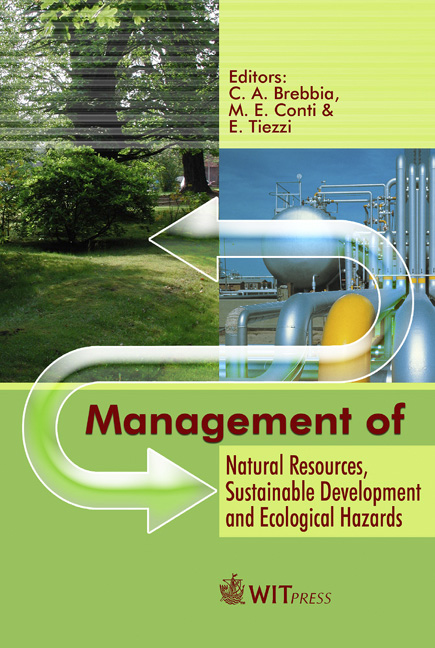Experimental Study Of An Artificial Groundwater Recharging Process
Price
Free (open access)
Transaction
Volume
99
Pages
12
Published
2006
Size
900 kb
Paper DOI
10.2495/RAV060511
Copyright
WIT Press
Author(s)
G. Chiaia & G. Ranieri
Abstract
Groundwater recharge is gaining ever greater importance in the context of the management of water resources. This practice can improve the quality of aquifers, or at any rate temporarily store resources that would otherwise be lost. The recent stipulation of the \“Piano Direttore”, an extract from the Plan for Safeguarding Water Resources (\“Piano di Tutela delle Acque”) by the Commissary appointed to deal with the environmental emergency situation in Apulia, has removed the prejudicial clause of illegality introduced by the Law Decree (D. Lgs. 152/99) of allowing rainwater runoff underground. Nevertheless, this type of plant is still rare in the territory, perhaps due to the lack of experimental data supporting the efficacy of the procedure. In the present work the experimental results obtained in an investigation campaign carried out at a recharge site are illustrated and discussed. The recharge site is equipped with suitable devices for continuous monitoring of the rainwater levels, the volume influx to the network, and the variations in the levels of the perched water. Finally, the experimental data are used as the preliminary settings for a mathematical model drawn up to represent the phenomenon. Keywords: aquifer recharge, experimental investigation, mathematical model. 1 Introduction The recent national and regional norms regulating the dispersion of rainwater (D.Lgs. 152/99, D. L.vo 258/00 Piano Direttore, an extract of the \“Piano di Tutela delle Acque”) pose fairly strict limits on rainwater runoff intercepted by the drainage/sewage system.
Keywords
aquifer recharge, experimental investigation, mathematical model.





